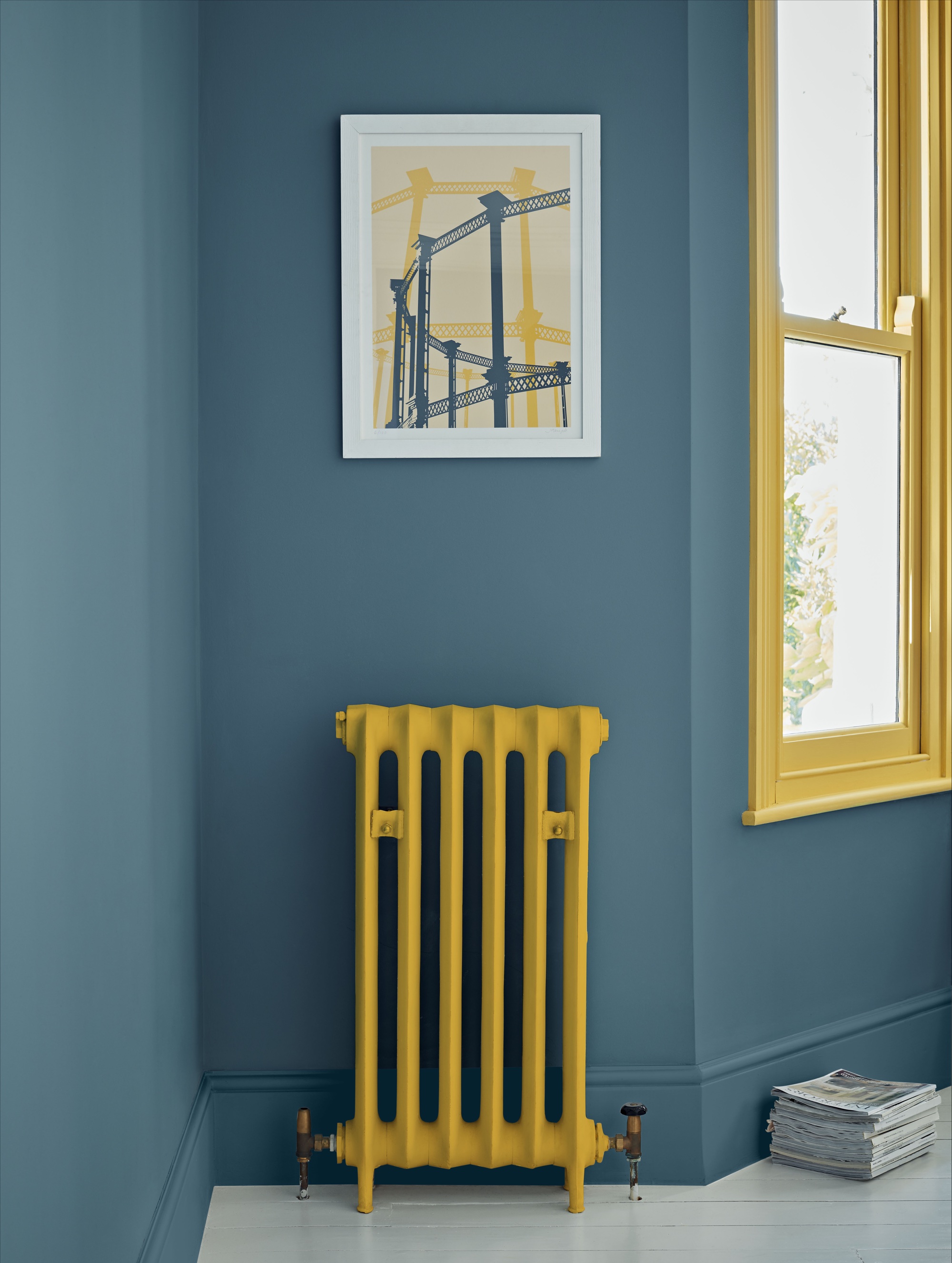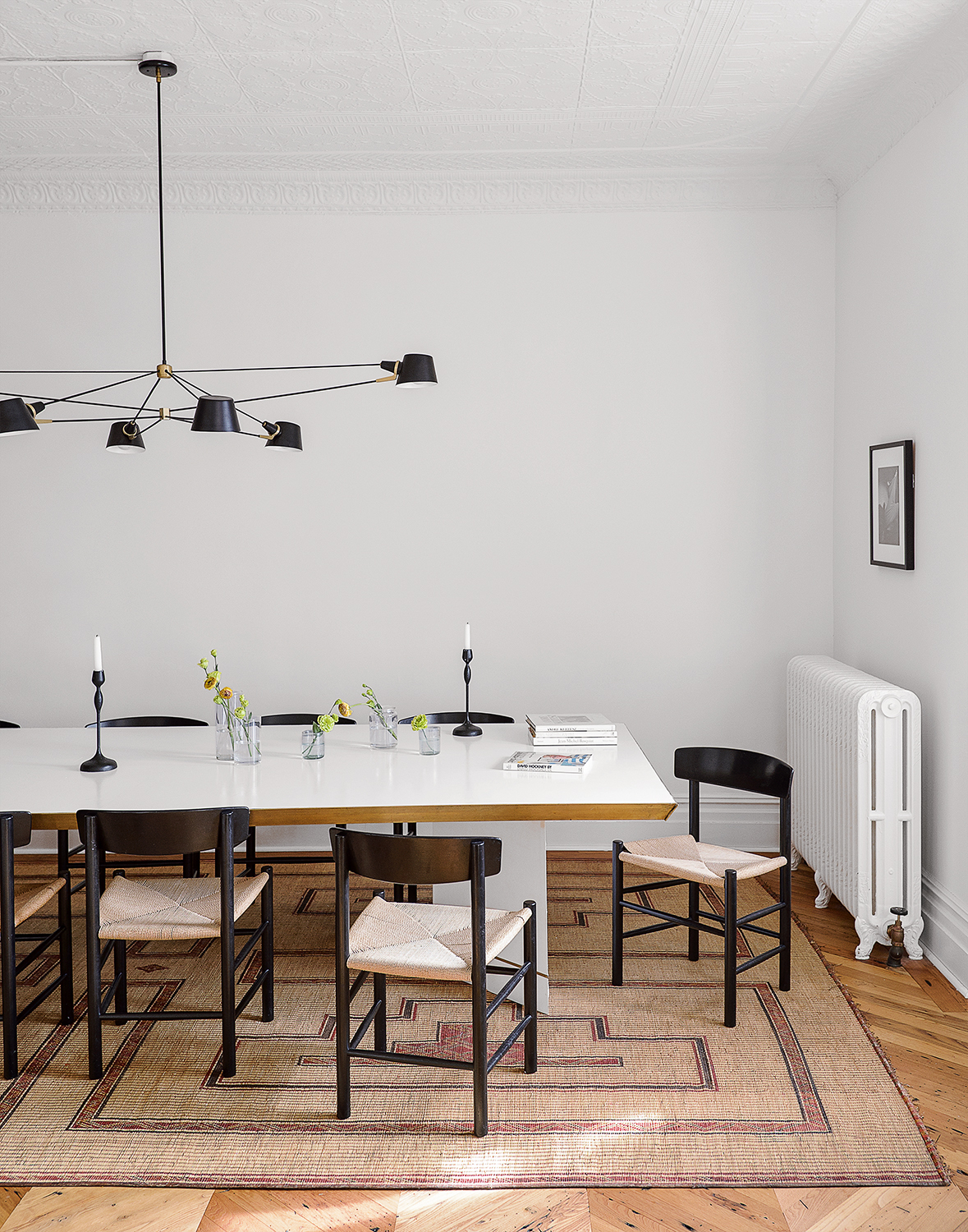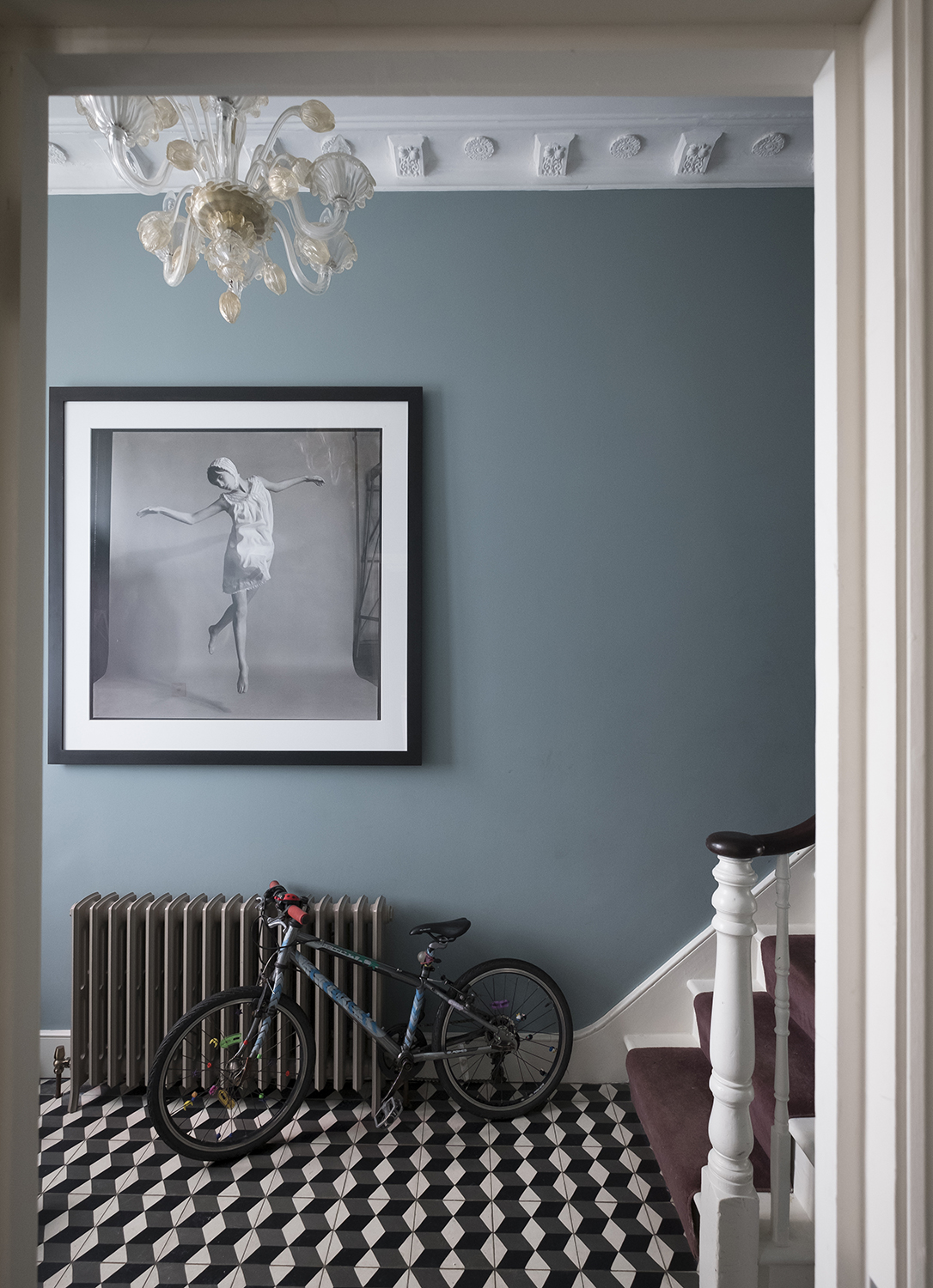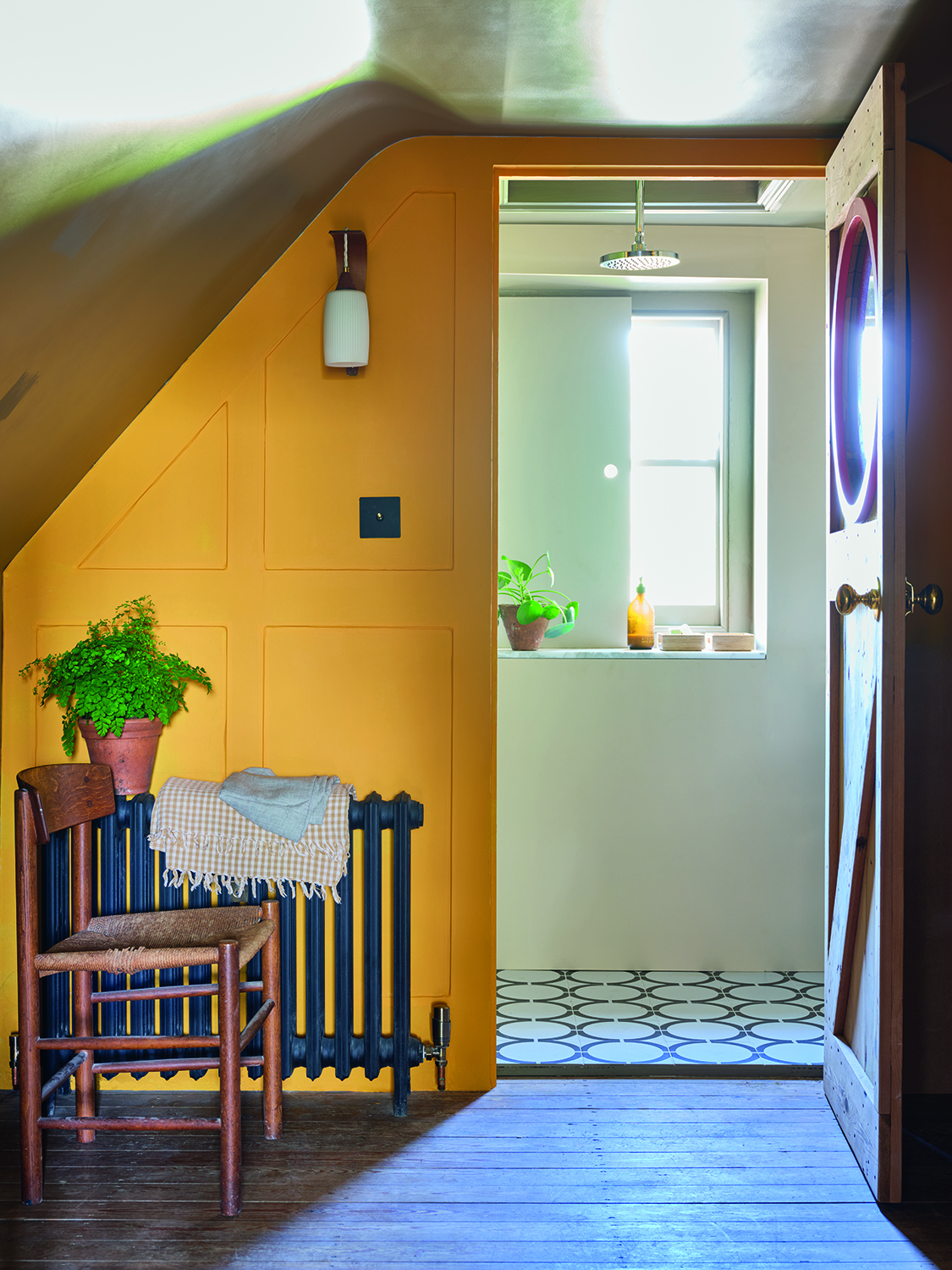How to paint behind a radiator - expert tips for a pro-worthy finish
These expert tips will help you learn how to paint behind a radiator with seamless results

Learning how to paint behind a radiator will reveal that a task that has always seemed daunting is actually pretty simple.
So, you mastered how to paint a wall but then you came unstuck when you hit the radiator. Sound familiar? Don't panic. This awkward space can be tackled with a long-handled roller and a little precision.
And, as a common feature in our homes, you'll need to know the tricks of how to paint behind a radiator as part of knowing how to paint a room for a stress-free process and an aesthetically pleasing finish.
Thankfully, we've rounded up a host of experts whose tips will make the job a whole lot easier. Rollers at the ready.
How to paint behind a radiator - a foolproof guide for a flawless finish

Knowing how to paint behind a radiator means you can revitalize an entire room without leaving any areas unfinished.
Current paint trends see color-drenching become a desirable way to create a curated space.
'Painting woodwork and radiators to match the wall continues to be a good idea because you get a more unbroken and strong area of color – which is especially good in small or awkward spaces,' says Helen Shaw, Marketing Director, Benjamin Moore.
But, of course, a contrasting color will also make a fun design statement.
See our step-by-step guide on how to paint behind a radiator below. You will need:
- Long-handled roller
- Dust sheet
- Masking tape - our editor swears by this masking tape from Amazon
- Sandpaper
- Vacuum cleaner
- Paint
1. Switch off your radiator

It might seem obvious, but first thing's first: switch off your radiator. 'Make sure you switch off the radiator and then allow it to cool before you start painting behind it,' says Justyna Korczynska, senior designer at Crown.
Alex Glover, Lick's specialist decorator and color consultant, says doing so can help the painting process too, adding: 'Turn your radiator off the night before painting to avoid unnecessary burns, or paint blistering.'
2. Measure the space between the radiator and the wall
It's important to know that you can fit a roller into the space behind the radiator before you start the process.
Alex Glover, Lick's specialist decorator and color consultant, advises: 'Check whether the space between the back of the radiator and the wall has enough depth to fit a mini roller behind it because, if not, the only option will be to get your plumber to remove them before painting.'
This long skinny roller from Amazon is perfect.
3. Protect the surrounding areas

'Assuming there is enough space, I would begin by protecting the surrounding areas of the radiator, including the floor and the radiator itself,' says Alex.
Place a dust sheet on the floor and place plastic sheeting or masking tape on the radiator to protect it.
4. Carry out your wall prep
It's always a good idea to clean and sand the wall before you apply your paint for a seamless finish.
'Wall prep requires some light sanding and a vacuum to remove any dust/debris before painting,' says Alex.
5. Paint from the top first

Confused about where to start? Take it from the top, says Lick's Alex Glover.
'Depending on radiator positioning and purpose, I would start at the top and work your way around the sides of the radiator,' he says. 'Less is more when it comes to loading up the mini roller as this will reduce dropping paint and getting it on the back of the radiator itself.'
Reach and roll in behind the radiator as far as you can, then continue around each side.
What is the best way to paint behind a radiator?

It really is a matter of having the correct equipment, according to Helen Shaw, Marketing Director, Benjamin Moore.
'For radiators that are around 1.5 inches away from a wall, you can paint behind them using a long handled mini-roller frame and a mini microfibre roller cover,' she says.
'You can protect the radiator with plastic sheeting and/or masking tape. For radiators that are tighter to the wall, it’s a case of using a small brush and getting as far behind the radiator as you can.
'Some radiators have flexible pipes meaning they can be unhooked for painting, but this is rare.
'If you just can’t get behind it satisfactorily, then you should consider asking a plumber to temporarily remove the radiator while the wall behind is painted.'
Can I take the radiator off the wall to paint behind it?
If there is not enough space to fit your roller behind the radiator, you can take the radiator off the wall to paint it - but we'd advise calling in the professionals.
'It’s simple for a plumber to temporarily remove a radiator,' comments Simon Morris, Marketing Manager of The Radiator Company.
'They’ll make sure that it’s emptied without draining the entire system, or flooding the house!'
He continues: 'Once the radiator is away from the wall, make sure it’s placed on a blanket or something that will protect it from being scratched, then prepare and paint the wall.
'When everything is dry, it’s a case of the plumber quickly rehanging and refilling the radiator.'
Be The First To Know
The Livingetc newsletters are your inside source for what’s shaping interiors now - and what’s next. Discover trend forecasts, smart style ideas, and curated shopping inspiration that brings design to life. Subscribe today and stay ahead of the curve.
Ruth Doherty is a lifestyle journalist based in London. An experienced freelance digital writer and editor, she is known for covering everything from travel and interiors to fashion and beauty. She regularly contributes to Livingetc, Ideal Home and Homes & Gardens, as well as titles like Prima and Red. Outside of work, her biggest loves are endless cups of tea, almond croissants, shopping for clothes she doesn’t need, and booking holidays she does.
-
 The 'New British' Style? This Victorian London Home Embraces Its Owners' Global Background
The 'New British' Style? This Victorian London Home Embraces Its Owners' Global BackgroundWarm timber details, confident color pops, and an uninterrupted connection to the garden are the hallmarks of this relaxed yet design-forward family home
By Emma J Page
-
 Muji Living Room Ideas — 5 Ways to Harness The Calming Qualities of This Japanese Design Style
Muji Living Room Ideas — 5 Ways to Harness The Calming Qualities of This Japanese Design StyleInspired by Japanese "zen" principles, Muji living rooms are all about cultivating a calming, tranquil space that nourishes the soul
By Lilith Hudson